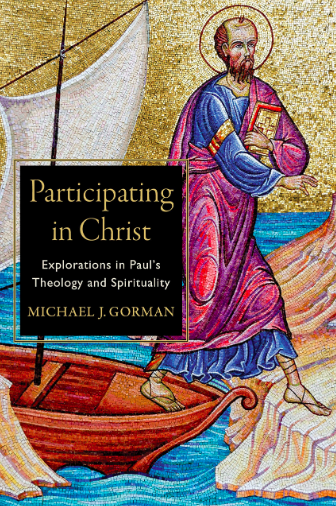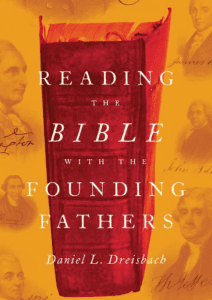I am going to begin a new series of posts today – one post every week or so – centered around Denis O. Lamoureux’s book Evolutionary Creation: A Christian Approach to Evolution. Dr. Lamoureux is an Associate Professor of science and religion at St. Joseph’s College in the University of Alberta (UA) in Edmonton. He received his BS in 1976 from UA, a DDS from UA in 1978 and then changed directions – receiving his MDiv and Master of Christian Studies degrees from Regent College Vancouver in 1987 and his Ph.D. in Interdisciplinary Theology–Science and Religion from University of St. Michael’s College, Toronto, in 1991. Returning once again to science he received a Ph.D. from UA in Oral Biology–Dental Development and Evolution. We need not agree with all of his conclusions as we work through the book – but he has the background to make it well worth reading and discussing. I have received several e-mails from readers who found his book very helpful and the publisher was kind enough to send a copy for consideration. For those who find the full book (400+ pages) somewhat daunting Dr. Lamoureux has condensed the book into a more accessible version (I Love Jesus & I Accept Evolution). He also provides audio and slide summaries of each chapter of Evolutionary Creation online.
 In the first chapter of his book Dr. Lamoureux puts forth a number of definitions and concepts to help discuss a Christian view of evolutionary creation. Everyone comes at this question from a historical context, and an understanding of the context helps to make sense of the situation. He begins by making an analogy:
In the first chapter of his book Dr. Lamoureux puts forth a number of definitions and concepts to help discuss a Christian view of evolutionary creation. Everyone comes at this question from a historical context, and an understanding of the context helps to make sense of the situation. He begins by making an analogy:
The world of ideas is similar to the world of color. We appreciate that many topics are not simple black-and-white issues and that many shades of opinion and understanding exist. Yet in contrast to the world of color, the ability to discern the spectrum of ideas is based more on our education and life experience than on genetic predispositions. Categories are for the most part learned, and once they become part of our mindset, they act like glasses through which we “see” the world. (p. 1)
In the discussion of the issues of origins, especially human origins, there are learned category distinctions that color the conversation and conversation difficult at times. There are also very real issues that underlie some of these categories, and these must be dealt with – not dismissed using superficial category distinctions and labels.
Two of the first categories that Lamoureux brings up are evolution and Darwinism, moving from there into consideration of the categories of creation and concordism (the expectation of correspondence between scripture and reality). After the jump I will summarize the discussion of these four categories – but to set the stage:
What do the categories evolution, Darwinism, creation, and concordism bring to the discussion? What preconceptions color the discussion from your perspective?
Evolution on a scientific professional level is simply a description of the ‘natural’ mechanisms that lead to modifications in the arrangements of matter leading to the diversity of biological life. These observations and the history deduced from them makes no statement about purpose or teleology. Evolution can be viewed as dysteleological (having no purpose or plan, driven by meaningless blind chance) or as teleological (a mechanism for producing an intended end result). Some scientists (especially some prolific popular writers) conflate evolution with lack of purpose and plan, but this follows from worldview not from the science.
Study of Darwinism is the study of the beliefs held by Charles Darwin during his lifetime. Introducing the term into a modern conversation of evolution or origins introduces confusion and proves nothing. Darwin was correct about some things, contributed some important insights, and was incorrect about very many things. This is about what one would expect given the state of knowledge of his day. The term Darwinism is meaningless in the modern discussion of evolutionary biology and should not be used. It is not used in the scientific literature.
Creation is another concept that introduces confusion. The Christian doctrine of creation is consistent with YEC creationism, but is not defined by any such literalism. According to Lamoureux the doctrine of creation is described by the following (p. 11-12):
The creation is radically distinct and different from the creator. The Creator transcends the creation. Yet He is also imminent …, knows their every detail, … enters the world to interact with his creatures at any time and in any way He so chooses.
The creation is utterly dependent on the Creator. God ordained the Universe and life into being and He continues to sustain their existence during every single instant. …He has ordered a plan and purpose for the world.
The creation was made out of nothing. … The Creator existed before all things and powers, both visible and invisible.
The creation is temporal. … God not only created physical matter and empty space, but also time. The universe is not eternal. It is bound in time and has both a beginning and an end.
The creation declares God’s glory. … In particular, the beauty, complexity, and functionality of the creation reflect intelligent design pointing to the mind of the maker.
The creation is very good. … This is a cosmos made ideally for experiencing love and developing relationships between ourselves and between us and our Creator.
Lamoureux sees two advantages to a doctrine of creation rooted these traditionally affirmed statements. First, it is not confined by or challenged by scientific discovery. The truth of God’s creation transcends any scientific understanding, past, present, or future. In science we explore and search for a better understanding of God’s creation, we get things right, sometimes we get things wrong, but the study can be done without fear. As Christians in the sciences we seek to understand God’s creation – we are not looking to explain away God or to identify gaps that only God can fill. He sustains and penetrates all from the beginning to the end. Second, Lamoureux points out that this expression of the doctrine of creation tends to unify Christians.
Finally there is the understanding of concordism, the method of biblical interpretation that looks for correspondence between scripture and reality. Lamoureux suggests dividing this into three realms. (p. 15-16)
Theological concordism … claims that there is an indispensable and non-negotiable correspondence between the theological truths of the Bible and spiritual reality. The central purpose of Scripture is to reveal God, including His character, laws, and acts.
Historical concordism asserts that Scripture is a reliable record of a period in human history. First and foremost, the Bible offers a trustworthy account of the ministry of Jesus of Nazareth. It is also a history of the nation of Israel and her interaction with neighboring countries and it documents the activities of the early Church.
Scientific concordism states that there is a correspondence between the Bible and the physical world. The most common form of this type of concordism aligns the Genesis creation accounts with modern science. … All scientific concordists agree that since the Bible predates the birth of modern science, any correspondence between the scientific statements of Scripture and science today is proof for divine inspiration. Only an all-knowing Creator who transcends time could reveal future scientific discoveries to ancient biblical writers.
Theological concordism is essential to a Christian understanding of scripture. It is consistent with the universal traditional understanding of scripture within the church, and it is consistent with what scripture teaches about itself. The typical “proof texts” for inerrancy say little, if anything, about historical concordism or scientific concordism, but theological concordism is implicit and explicit.
You, however, continue in the things you have learned and become convinced of, knowing from whom you have learned them, and that from childhood you have known the sacred writings which are able to give you the wisdom that leads to salvation through faith which is in Christ Jesus. All Scripture is inspired by God and profitable for teaching, for reproof, for correction, for training in righteousness; so that the man of God may be adequate, equipped for every good work. 2 Tim. 3:14-17
The purpose of scripture is theological – the purpose is to teach about God, the nature of God, the law of God, the relationship of God with his creation, and to give the wisdom that leads to salvation through faith that is in Christ Jesus. The theological purpose of scripture requires historical concordism at some level. It requires truthfulness in telling the story of Israel, of Jesus, and of the Church, but it does not require that the history be told in the form of a transcript of events. The theological purpose of scripture does not require the kind of historical concordism that demands harmonization of the gospels, of King and Chronicles, of the creation accounts in Genesis 1 and 2, or of the conversion and early travels of Paul as related in Acts and the Epistles.
The theological purposes of scripture requires little, if any, scientific concordism. In fact, it seems clear that the science in scripture, especially the science in the creation accounts, is ancient science. According to Lamoureux “It is the science-of-the-day a few thousand years ago in the ancient Near East. Therefore any attempt to align science with biblical statements about the origin of the world is doomed.” (p. 18)
This first chapter of Lamoureux’s book introduces a number of concepts. A discussion of science and faith as related to biology and common descent requires a consistent use of terminology. The term evolution should be used and understood as it is used and understood in the scientific community. The terms Darwinism and Darwinist should be dispensed with altogether. Most interesting in this chapter though are his description of the doctrine of creation and his parsing of the idea of concordism, dividing it into component parts. This is where I’d like to focus conversation today. What do you think?
Is the doctrine of creation as outlined by Lamoureux consistent with your understanding? Is something missing or unnecessary?
Is this distinction between types of concordism – expectations for the correspondence between scripture and reality – useful? Do they further understanding, or lead to confusion?
If you wish to contact me directly you may do so at rjs4mail[at]att.net
If interested you can subscribe to a full text feed of my posts at Musings on Science and Theology.











